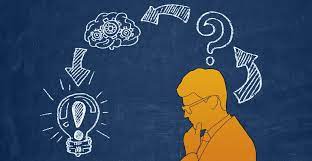Introduction :
Making logical links between concepts, facts, or pieces of knowledge in order to draw conclusions or form judgements is the cognitive process of reasoning. It entails the capacity for critical thought, information analysis, taking into account many viewpoints, and making logical deductions. Here is a thorough breakdown of the reasoning process’s constituent parts:
1 Observations or Information: Observing or learning important facts about a specific topic or issue is the first step in reasoning. This information may originate from firsthand knowledge, statistical evidence, academic studies, or any other trustworthy source.
2 Analysis:Once the data is ready, rigorous analysis is the next step. This entails disassembling the data into its component parts, spotting patterns or linkages, and gleaning pertinent information. Analysis clarifies key elements that must be taken into account and aids in a better understanding of the issue or scenario.
3 Identifying the Problem: Reasoning is frequently used to solve problems or provide answers to certain questions. Clarity in problem or question identification is essential since it establishes the course for the thinking process. It aids in outlining the goals and parameters of the reasoning exercise.
4 Evaluation of Evidence: Assessing the dependability, relevance, and accuracy of the available evidence or information is a necessary step in the reasoning process. Here, critical thinking abilities are necessary because one must evaluate the reliability of the sources, take into account any potential biases, and scrutinise the arguments or statistics that support them. This assessment makes sure that only reliable and accurate data is used in subsequent reasoning.
5 Forming Hypotheses:One might come up with hypotheses or tentative answers for the issue at hand based on the examination and evaluation of the available data. It is possible to test or further investigate hypothese, which are educated assumptions or forecasts. They act as launching pads for argumentation and direct the logical thought process.
6 Deductive Reasoning: Drawing logical inferences from broad premises or principles is known as deductive reasoning. It adopts a top-down methodology, starting with a broad assertion or theory and then applying it to particular instances or circumstances. The use of deductive reasoning is common in formal logic and mathematics.
7 Inductive Reasoning:Deductive reasoning operates in one way; inductive reasoning operates in the other. It entails drawing particular observations or pieces of data into general concepts or ideas. By identifying patterns or trends in particular examples and extrapolating them to more general conclusions or forecasts, inductive reasoning employs a bottom-up methodology. Scientific studies and empirical investigations frequently use this kind of reasoning.
8 Critical Thinking: Critical thinking is essential to the entire process of reasoning. It entails challenging preconceived beliefs, disputing assumptions, exploring alternate points of view, and objectively assessing arguments. By using critical thinking, one can steer clear of prejudices, logical errors, and flawed reasoning.
9 Logical Inferences: Drawing logical inferences or conclusions from the facts at hand and sound logical principles is the goal of reasoning. A conclusion that is supported by the available evidence is reached by making connections between various pieces of information, filling in any gaps, and using logical inferences. It makes use of legitimate thinking techniques including analogies, syllogisms, and causal inference.
10 Iterative Process: Iterative means that there are several cycles of analysis, assessment, hypothesis creation, and testing in the process of reasoning. The reasoning process could need to be amended or altered to take into account new information as it becomes available or when more viewpoints are taken into account.
Conclusion :
Individuals can engage in effective reasoning to solve problems, make informed decisions, and reach logical conclusions by using these procedures and critical thinking techniques. We use reasoning, a fundamental cognitive skill, to get around the world’s complexity and make sense of the data we come across.




